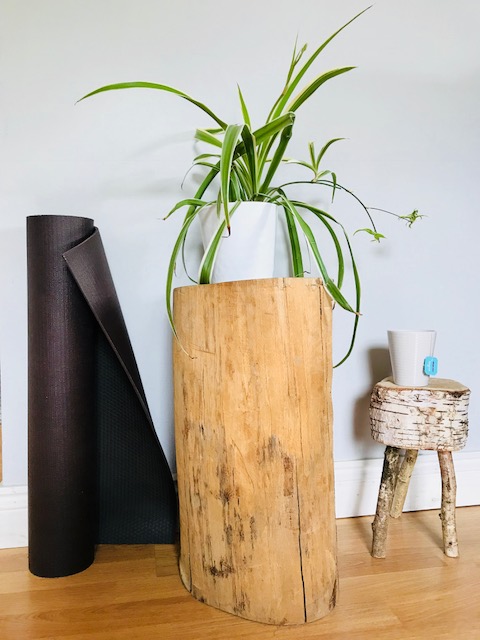
4 Steps To A Greener Yoga Practice
4 Steps To a Greener Yoga Practice
Your yoga practice is a time to connect to your body, breath, and your spiritual development. It doesn’t require any fancy complicated equipment or clothing. Traditionally, yogis didn’t have yoga mats and often practiced outside on the grass or indoors on rugs. They advanced without the requirement for, lets say, a ‘non slip, lightweight pale green’ yoga mat. Basically, you don’t need anything to practice yoga. What we do need however, is to all live a more sustainable lifestyle, reducing our dependency on Mother Nature’s natural resources. As individuals and as a society we need to reduce our waste and become more content with what we have. And as practitioners of yoga we can make a start with our practice. Sounds like a big task to undertake? Maybe not. Let’s look at the ways that we can take yoga back to its roots, live a more sustainable life and thus cultivate a greener yoga practice.
Yoga Mats
To practice yoga or meditation you don’t actually need a yoga mat. If you attend public classes, the instructor will nearly always spare mats. Realistically however, it is nice to have your own space and also more hygienic. So what to do? Invest in a good quality eco-friendly mat that is free from toxic chemicals and known carcinogens. If you buy cheap, the chances are that the mat will contain PVC (toxic plastic) along with other nasties. Inexpensive mats won’t last long cannot be recycled and likely just to end up in landfill. Try and buy second hand or check with family or friends if anyone has a spare that you could use.
Avoid Cosmetics
Any lotions or perfumes generally contain petroleum based chemicals called phthalates. Along with allergies (runny nose, wheezing, rash) research has shown that these lead to hormonal imbalances. And this isn’t just on those who are wearing them. Passively inhaling synthetic fragrances in a yoga class isn’t just distracting, but hinders our attempts of oxygenating the body using cleansing breaths. It’s bad for your health, your classmates and your environment.
Connect To Nature
Humans have an innate bond with nature and other forms of life. If you practice yoga outside, there is no use on resources such as electricity and you also have the added benefits of moving and breathing in a natural environment. If travelling to a public class see if you can avoid the car and walk or cycle. For a home practice indoors, surround yourself with plants. Houseplants increase oxygen levels in an environment by absorbing the carbon dioxide that we humans exhale. This is ideal for our Yoga Pranayama practice.
Ditch The Water Bottle
Often a strong yoga practice can leave us feeling dehydrated so many bring a plastic water bottle to yoga class. However, single use plastic bottles can take anywhere from 450 to 1000 years to biodegrade which leaves a huge carbon footprint. Make sure and bring a reusable stainless bottle for water or flask for herbal tea.
Any more tips on how to have a greener yoga practice? Share in the comments below.
Leave a Reply to How To Create The Perfect Evening Routine – Julie Hyde Yoga Cancel comment reply
You must be logged in to post a comment.



[…] Sanctuary Your bedroom needs to be your sanctuary. Make sure its clutter free and you close all wardrobe doors and drawers. Maybe light a candle or burn some essential oil in a […]